Choosing a circulation pump for a heating system
Heating systems are divided into systems with natural (gravitational) and forced circulation. In systems with forced circulation, the installation of a circulation pump is mandatory. Its task is to ensure the movement of the coolant through the system at a given speed. And in order for him to cope with his task, choose the right circulation pump.
The content of the article
Purpose and types
As already mentioned, the main task of the circulation pump is to provide the required speed of movement of the coolant through the pipes. For systems with forced circulation, only under such conditions will the design capacity be achieved. During the operation of the circulator, the pressure in the system increases slightly, but this is not its task. It is rather a side effect. To increase the pressure in the system, there are special booster pumps.
There are two types of circulation pumps: dry and wet rotor. They differ in design, but perform the same tasks. To choose which type of circulation pump you want to install, you need to know their advantages and disadvantages.
Dry rotor
It got its name due to the design features. Only the impeller is immersed in the coolant, the rotor is in a sealed casing, it is separated from the liquid by several O-rings.
These devices have the following properties:
- They have a high efficiency - about 80%. And this is their main plus.
- Requires regular maintenance. During operation, solid particles contained in the coolant fall on the O-rings, breaking the tightness. To prevent leakage and service is necessary.
- The service life is about 3 years.
- They emit a high level of noise during operation.
This set of characteristics is not very suitable for installation in heating systems of private houses. Their main plus is high efficiency, which means less power consumption. Therefore, in large networks, circulation pumps with a dry rotor are more economical, and they are mainly used there.
Wet rotor
As the name implies, this type of equipment contains both the impeller and the rotor in the liquid. The electrical part, including the starter, is enclosed in a metal sealed glass.
This type of equipment has the following properties:
- The efficiency is about 50%. Not the best indicator, but for small private heating systems this is not critical.
- Maintenance is not required.
- Service life - 5-10 years, depending on the brand, operating mode and condition of the coolant.
- Almost inaudible during operation.
Based on the above properties, it is not difficult to choose a circulation pump by type: most stop at devices with a wet rotor, since they are more suitable for working in an apartment or a private house.
How to choose a circulation pump
Each circulation pump has a set of technical characteristics. They are selected individually for the parameters of each system.
We select technical characteristics
Let's start with the selection of technical characteristics. There are a lot of formulas for a professional calculation, but for the selection of a pump for the heating system of a private house or apartment, you can get by with average rates:
- The pump performance is taken to be equal to the power of the installed heating boiler. That is, if the boiler is 35 kW, then the pump is selected with a capacity of 35 l / min.
- Next, you need to calculate the required head (lifting height). On average, it is believed that for 10 meters of the pipeline there should be a pump head of 0.6 m.To determine what pressure of the circulation pump is needed for the system, its total length must be divided by 10 and multiplied by 0.6 m / s. For example, if the total length of the heating system, for example, 80 m, the required head will be: 0.6 m * 8 = 4.8 m. That is, the head should not be less in the technical specifications.
- It is better if the speed of movement of the coolant in the system can change. This will make it possible to adjust the heat transfer depending on the temperature outside: the higher the speed, the more heat is transferred. Therefore, it is better to choose models that can operate at multiple speeds. But in any case, the speed of movement of the coolant should not exceed 1.6 m / s. This is the threshold for the silent operation of the heating system, if you accelerate the coolant faster, noise will appear.
- The electrical power of the circulation pump is selected depending on the diameter of the pipes. The smaller the section of the pipe, the greater the hydraulic resistance it has. That is, for systems with small diameter pipes, more powerful pumps are required.
It is not difficult to choose a circulation pump for heating following these rules. Elementary calculations. But I must say that these figures are average. If your house at some point is very different from the "average", you need to make adjustments either upwards or downwards in technical characteristics. For example, you insulated the house well, the capacity of the previously purchased boiler turned out to be excessive. In this case, it makes sense to take a pump with a lower capacity. In the opposite situation - it is chilly in the house in extreme cold - you can put a more efficient circulator. He will temporarily solve the problem (in the future, it is necessary to either insulate or change the boiler).
Model selection
When choosing a specific model, pay attention to the graph with the pressure characteristic of the pump. On the graph, you need to find the point at which the values of pressure and productivity intersect. It should be in the middle third of the curve. If it does not fall on one of the curves (there are usually several of them that characterize different models), take the model whose graph is closer. If the point is in the middle, take the less productive one (the one below).
What else to pay attention to
There are several more items in the technical characteristics of circulation pumps that are worth paying attention to. The first is the permissible temperature of the pumped medium. That is, the temperature of the coolant. In quality products, this indicator is in the range from + 110 ° C to + 130 ° C. In cheap ones it can be lower - up to 90 ° C (and in fact 70-80 ° C). If your system is designed as a low-temperature one, this is not scary, but if there is a solid fuel boiler, the temperature to which the coolant can be heated is very important.
It is worth paying attention to the maximum pressure at which the pump can operate. In the heating system of a private house, it rarely exceeds 3-4 atm (this is for a two-story house), but normally it is 1.5-2 atm. But still, pay attention to this indicator.
What else to pay attention to is the material from which the case is made. The optimal one is cast iron, the cheaper one is made of special heat-resistant plastic.
Connection type and size. The circulation pump can be threaded or flanged. The thread can be external and internal - the appropriate adapters are selected for it. Connecting sizes can be: G1, G2, G3 / 4.
You should also pay attention to the availability of protection. Can be dry run protection. In circulation pumps with a wet rotor, it is very desirable, since the cooling of the motor occurs due to the transported medium. If there is no water, the motor overheats and fails.
Another type of protection is overheating protection. If the motor heats up to a critical value, the thermostat cuts off the power, the pump stops.These two functions will extend the life of the equipment.
How and where to install the circulation pump read here.
Manufacturers and prices
When choosing manufacturers of a circulation pump, the approach is the same as when choosing any arc technology. If possible, it is better to take equipment from European manufacturers that have been on the market for a long time. The most reliable circulation pumps in this sector are Willo (Villo), Grundfos (Grundfos), DAB (DAB) circulation pumps. There are other good brands, but you need to read reviews for them.
| Name | Performance | Pressure | Number of speeds | Connecting dimensions | Maximum working pressure | Power | Body material | Price |
|---|---|---|---|---|---|---|---|---|
| Grundfos UPS 25-80 | 130 l / min | 8 m | 3 | G 1 1/2 " | 10 bar | 170 watts | Cast iron | 15476 rbl |
| Caliber NTs-15/6 | 40 l / min | 6 m | 3 | external thread G1 | 6 atm | 90 watts | Cast iron | 2350 rbl |
| BELAMOS BRS25 / 4G | 48 l / min | 4.5 m | 3 | external thread G1 | 10 atm | 72 watts | Cast iron | 2809 rbl |
| Jileks Compasses 25/80 280 | 133.3 l / min | 8.5 m | 3 | external thread G1 | 6 atm | 220 watts | Cast iron | 6300 rbl |
| Elitech NP 1216 / 9E | 23 l / min | 9 m | 1 | external thread G 3/4 | 10 atm | 105 watts | Cast iron | 4800 rbl |
| Marina-Speroni SCR 25 / 40-180 S | 50 l / min | 4 m | 1 | external thread G1 | 10 atm | 60 watts | Cast iron | 5223 rbl |
| Grundfos UPA 15-90 | 25 l / min | 8 m | 1 | external thread G 3/4 | 6 atm | 120 watts | Cast iron | 6950 rub |
| Wilo Star-RS 15 / 2-130 | 41.6 l / min | 2.6 m | 3 | internal thread G1 | 45 watts | Cast iron | 5386 rbl |
Please note that all specifications are for water movement. If the coolant in the system is an antifreeze liquid, adjustments must be made. For data relevant to this type of coolant, you will have to contact the manufacturer. In other sources, similar characteristics could not be found.

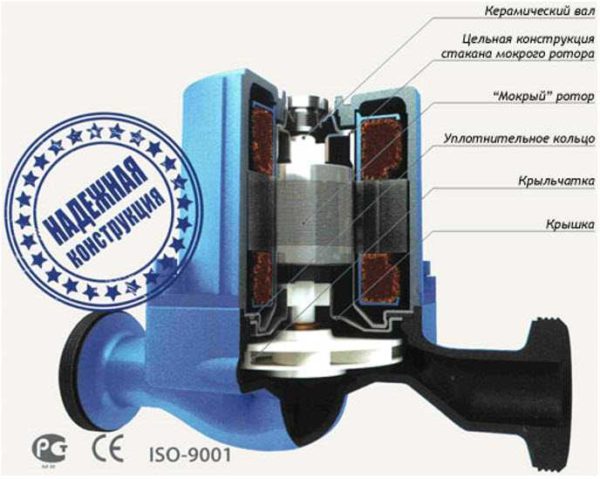
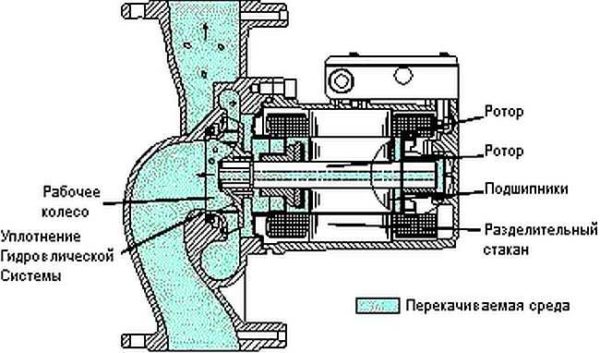
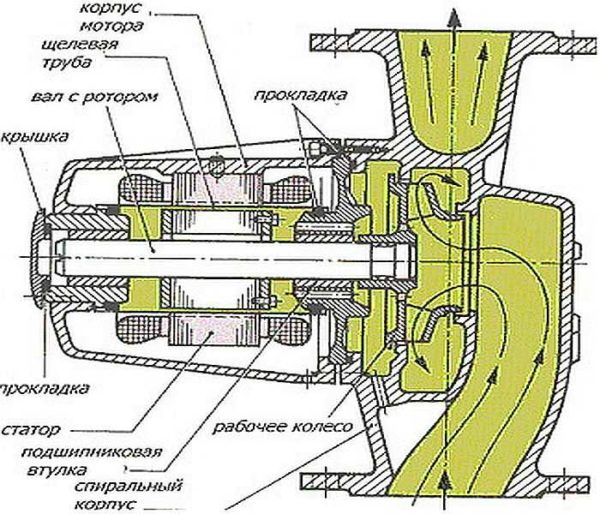
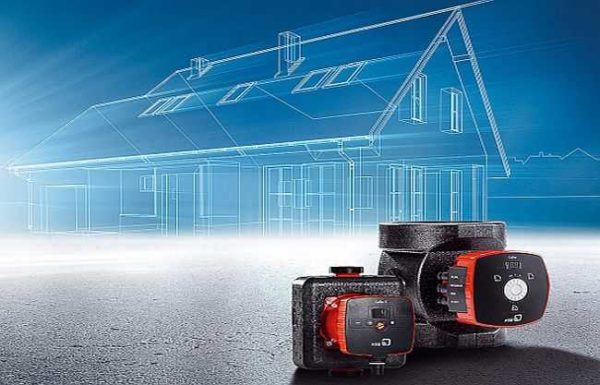
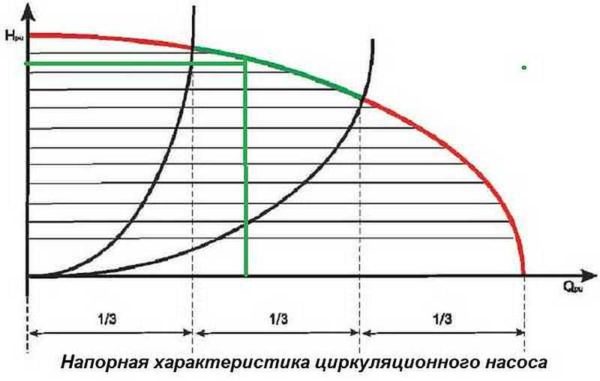
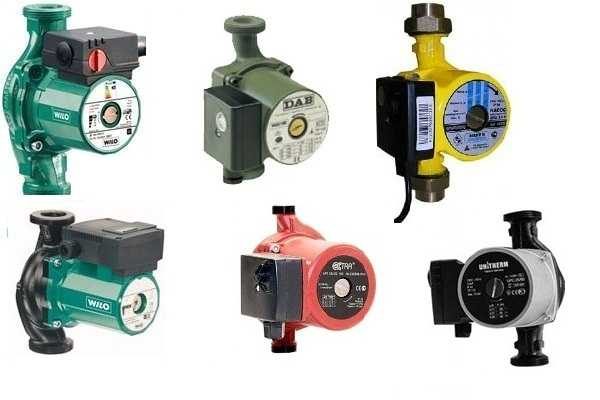
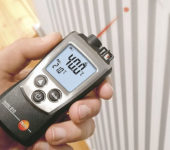

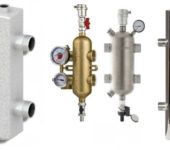







Please, issue an invoice for the flanged circulation pump for heating DN40
We do not sell anything. The site is informational.
Hello! We do not place advertising on the site.
Can the pump run in an upright position?
It is necessary to look at the documents for a specific model. If we take for example the GRUNDFOS series UPS xx-100 and UPSD xx-100, then the instructions say:
The pump must always be installed so that the motor shaft is horizontal..
We look at Wilo-Star RS, RSD, ST, RSG, AC:
Install in such a way that mechanical stresses from pipelines and with horizontal pump shaft.
For both series, the main thing is to ensure the horizontal position of the shaft. Those. the pump itself can be installed both horizontally and vertically. Accordingly, when installing the pump horizontally, it is necessary to turn the casing so that the shaft is in a vertical position. When installing the pump strictly vertically, you do not need to control anything, since the shaft will always be located vertically.